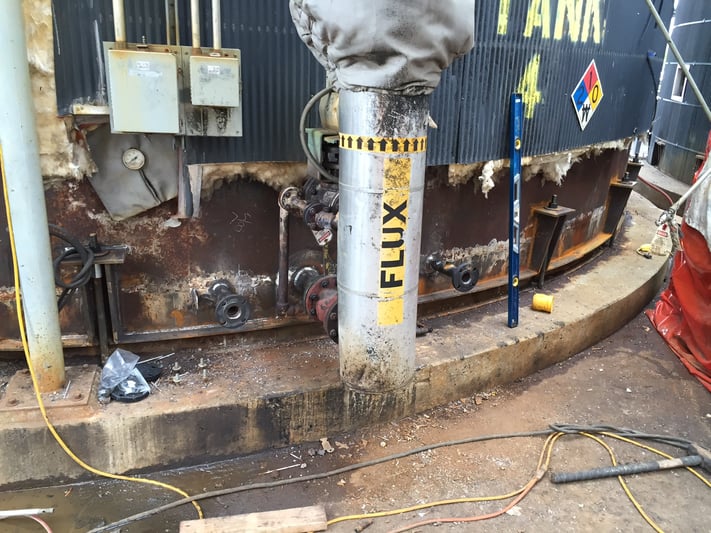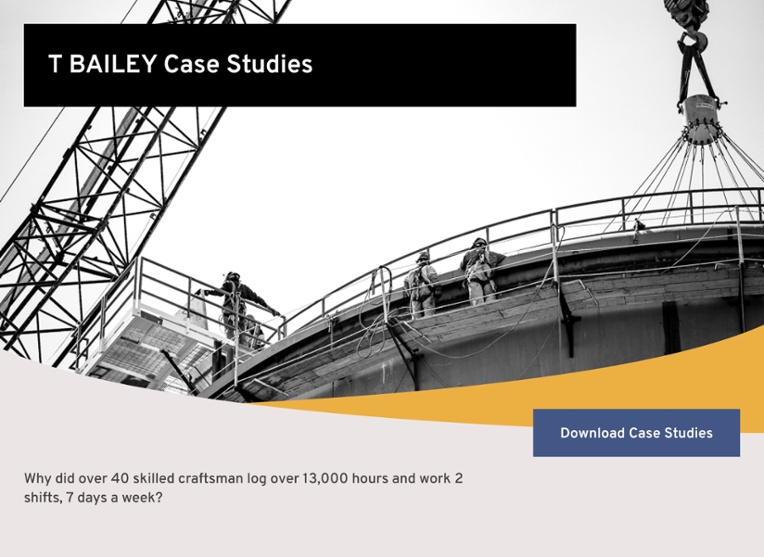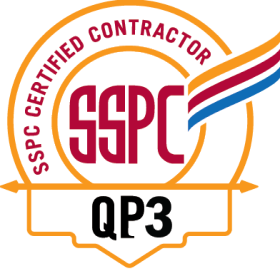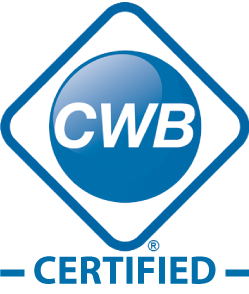You’ve just received your API 653 inspection report and are faced with the hard reality that your aboveground steel tank (AST) has a leaking bottom. What do you do now? How do you stop the leaking and ensure it won’t haunt you later down the road? How much will the repair cost?

These are all important questions you might be faced with as you navigate how to repair the bottom of your tank. If the tank is out of service, it’s not working for you but rather against you – making the correct modifications will put you back online.
What Is An El Segundo Tank Bottom?
The “El Segundo” Bottom was first developed and performed at Chevron’s Southern California Refinery in El Segundo, California in the 1970’s. This technique was designed to not only fix the leaking tank but to provide secondary containment and early detection of leaks that will save you time and money down the road, preventing environmental catastrophes. As you are fixing the bottom of your tank, it is strongly encouraged – and may be required – to install a secondary containment with a leak prevention program.
Older tanks were built without a liner. Consequently, if the tank were to leak, the product would go into a dike containment but leave you with significant environmental impacts and a large cost for cleaning up the leaking product – and after all of that, you still have to fix the tank bottom. However, newer tanks are now being built with a liner to provide secondary containment, as well a leak detection program that is found in the El Segundo bottom.
How is An El Segundo Tank Bottom Made?
An El Segundo bottom involves placing a liner on top of the existing bottom. followed by a concrete layer and a new steel bottom. Once installed, if the bottom of the tank begins to leak, the product travels down to concretes slots and to leak detection ports. A periodic inspection of these ports is performed, or automatic sensors are installed to notify the tank owner of the leak. Leaking product is trapped by the liner and prevents an environmental damaging event. Once the leak is discovered, the owner can identify the cause of the leak and repair it, minimizing the potential environmental and safety impacts.
The sequence of installation following cleaning and inspection of the tank is that a geotextile fabric is placed on top of the existing bottom to protect the liner from damage. A liner is then placed over the top of the geotextile fabric and anchored to the side of the shell just below the new bottom. Concrete is poured over the top of the liner and leak detection slots are formed or cut from the center of the tank to the shell detection ports. Once the concrete has cured, a new bottom is installed by slotting the shell just above the new concrete layer and extending the new bottom or annual plates beyond the tank per API requirements. Many times the lower course shell penetrations must be raised in order to meet current code minimum height clearances.
Why Not Just Replace the Bottom?
The wonderful thing with an El Segundo bottom is that you can leave your existing bottom in place and put an El Segundo bottom on top, saving you the expense of removing the old bottom and providing the liner that is necessary (T BAILEY LLC evaluates all of these options when performing tank bottom repairs).
Adding an El Segundo bottom can also lengthen the time you need to have internal inspection of your tank, which will force you to remove product and take your tank offline.
How the El Segundo Bottom Can Help
Several variations of the El Segundo technique are used to provide primary as well as secondary containment. Some variations include using sand on top of the liner or installing PVC slotted pipes for leak detection. Additionally, sand or concrete can be used without the installation of a liner when the existing bottom is proven to be intact.
It is also important to consider the type of bottom your existing steel tank has, as that may impact the type of secondary containment system you use.
3 Types of Bottoms Your Steel Tank May Have:
Cone-up
These bottoms are built with a high point in the center of the tank, crowning the foundation and constructing the tank to match this crown. At some points there is a primary sump which can assist in removing liquid (such as water) from the bottom of the tank making it easier to clean.
Shovel-bottom
The bottom is shaped like a shovel, forcing the fluids to one side of the tank. These bottoms are not frequently used but are still effective.
Cone-down
The bottom slopes toward the center of the tank. Typically a collection point (sump) is at the center of the tank. This design is more complex because it requires a secondary sump and underground piping. The El Segundo bottom might not be best suited for these tank bottoms as it will take a while to detect a leak. In some instances, T BAILEY LLC recommends changing the type of bottom to provide for better maintenance and a more efficient leak detection program.
What Is A Secondary Containment?
The idea of what is considered a secondary containment may depend upon who you talk to. Some think it is an all-inclusive definition for an impervious dike containment beneath and beyond the AST. Others consider it to be a release prevention barrier as seen in the El Segundo bottom based upon the category of the tank.
Most federal, state, or local government agencies have standards you should consult to navigate the requirements. T BAILEY LLC is also available for assistance and have API 653 inspectors on staff. The El Segundo bottom does not always relieve you from needing an all-inclusive impervious dike containment, but it will provide for a leak detection program that can save you time and energy.
Beyond utilizing the El Segundo technique there are many other options to consider when performing tank bottom repair and secondary containment improvements.
- Complete bottom replacement
- Floor Patching & Plate Replacement
- Leak Detection Equipment
- Contaminated Fill excavation and replacement
- HDPE Liner Installation under the tank
- Cathodic Protection
- Lap & Butt Welded Bottoms with or without Annual Rings
- Grouting the tank under the foundation
- API 653 Inspection Requirements
If you need assistance in fixing or determining how to correct your leaking tank bottom and might be interested in the El Segundo technique, contact T BAILEY LLC today.







